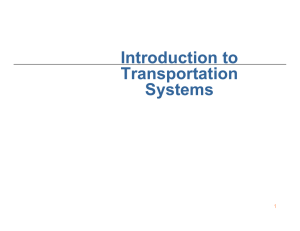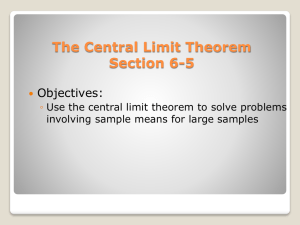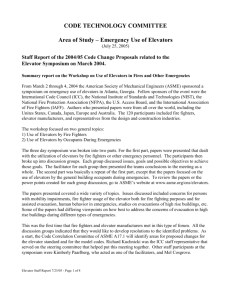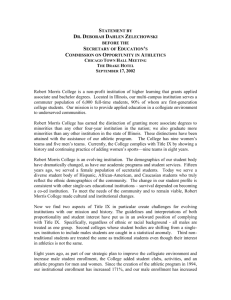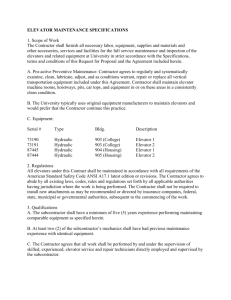PowerPoint
advertisement
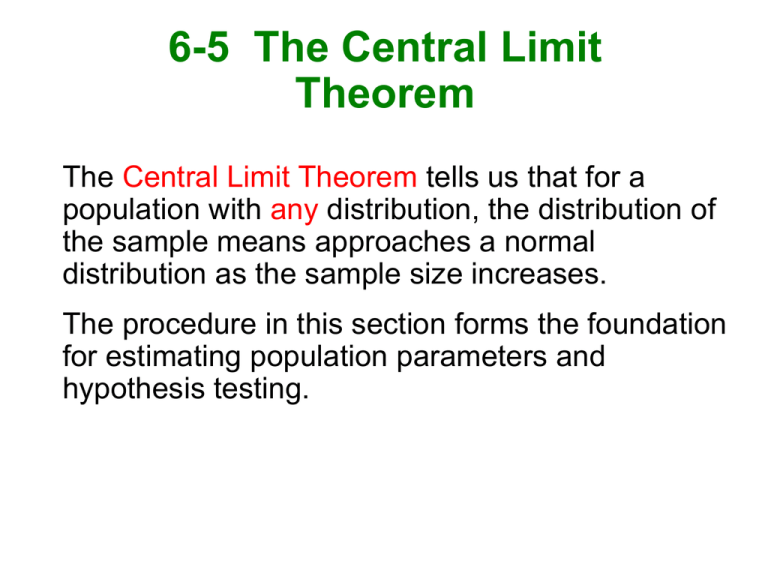
6-5 The Central Limit Theorem The Central Limit Theorem tells us that for a population with any distribution, the distribution of the sample means approaches a normal distribution as the sample size increases. The procedure in this section forms the foundation for estimating population parameters and hypothesis testing. Central Limit Theorem 1. The distribution of sample x will, as the sample size increases, approach a normal distribution. 2. The mean of the sample means is the population mean . 3. The standard deviation of all sample means is / n . Practical Rules Commonly Used 1. For samples of size n larger than 30, the distribution of the sample means can be approximated reasonably well by a normal distribution. The approximation becomes closer to a normal distribution as the sample size n becomes larger. 2. If the original population is normally distributed, then for any sample size n, the sample means will be normally distributed (not just the values of n larger than 30). Notation The mean of the sample means x The standard deviation of sample mean x n (often called the standard error of the mean) Example - Normal Distribution As we proceed from n = 1 to n = 50, we see that the distribution of sample means is approaching the shape of a normal distribution. Example - Uniform Distribution As we proceed from n = 1 to n = 50, we see that the distribution of sample means is approaching the shape of a normal distribution. Example - U-Shaped Distribution As we proceed from n = 1 to n = 50, we see that the distribution of sample means is approaching the shape of a normal distribution. Important Point As the sample size increases, the sampling distribution of sample means approaches a normal distribution. Example – Elevators Suppose an elevator has a maximum capacity of 16 passengers with a total weight of 2500 lb. Assuming a worst case scenario in which the passengers are all male, what are the chances the elevator is overloaded? Assume male weights follow a normal distribution with a mean of 182.9 lb and a standard deviation of 40.8 lb. a. Find the probability that 1 randomly selected male has a weight greater than 156.25 lb. b. Find the probability that a sample of 16 males have a mean weight greater than 156.25 lb (which puts the total weight at 2500 lb, exceeding the maximum capacity). Example – Elevators a. Find the probability that 1 randomly selected male has a weight greater than 156.25 lb. Use the methods presented in Section 6.3. We can convert to a z score and use Table A-2. z x 156.25 182.9 0.65 40.8 Using Table A-2, the area to the right is 0.7422. Example – Elevators b. Find the probability that a sample of 16 males have a mean weight greater than 156.25 lb. Since the distribution of male weights is assumed to be normal, the sample mean will also be normal. x x 182.9 x x 40.8 n 10.2 16 Converting to z: z 156.25 182.9 10.2 2.61 Example – Elevators b. Find the probability that a sample of 16 males have a mean weight greater than 156.25 lb. While there is 0.7432 probability that any given male will weigh more than 156.25 lb, there is a 0.9955 probability that the sample of 16 males will have a mean weight of 156.25 lb or greater. If the elevator is filled to capacity with all males, there is a very good chance the safe weight capacity of 2500 lb. will be exceeded.

